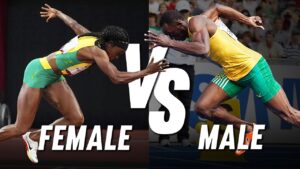Gender Differences in Sports Performance Statistics
Introduction to Gender Differences in Sports

Sports have always been integral to global culture, reflecting societal values, physical capabilities, and the human spirit of competition. Analyzing sports performance and popularity through a gender lens reveals distinct disparities that influence public perception and participation. To fully understand these nuances, it’s vital to explore key aspects such as male vs female sports viewership statistics and actual competitive performance metrics in sports like football.
Physical Performance and Societal Perceptions
Exploring male vs female sports statistics uncovers intriguing differences in physical capabilities, participation rates, and societal interest. Generally, male athletes exhibit superior performance in sports demanding sheer strength, speed, and stamina, largely due to physiological differences. These performance gaps not only shape the popularity of predominantly male sports but also contribute to reinforcing traditional stereotypes and biases, fueling discussions around gender inequality sports.
Physiological Factors Influencing Performance
Physiological differences, including muscle mass, cardiovascular capacity, and bone density, often give male athletes performance advantages in strength and endurance-based sports. Understanding these physiological distinctions can foster better appreciation for each gender’s athletic achievements and promote fairer evaluations.
Football as a Case Study
When specifically analyzing football, significant contrasts emerge in male vs female football statistics. Men’s football is exceptionally popular worldwide, attracting billions of viewers, extensive sponsorship deals, and significant financial investments. Major events such as the FIFA Men’s World Cup exemplify this, demonstrating a remarkable economic and cultural impact.
On the other hand, women’s football, although rapidly growing, still faces challenges like lower spectator attendance and less significant media coverage. These challenges reflect broader societal issues, where women’s sports often struggle for equal recognition and financial investment compared to men’s.
Progress and Challenges in Women’s Football
Despite historical disadvantages, women’s football has recently made significant progress in global recognition and professionalization. Increased investment and promotional efforts are beginning to bridge the gap, yet substantial challenges remain in achieving true parity.
Football Viewership Comparison Table
| Event | Average Global Viewership |
|---|---|
| FIFA Men’s World Cup Final (2018) | 1.12 billion |
| FIFA Women’s World Cup Final (2019) | 260 million |
| UEFA Men’s Champions League Final | 380 million |
| UEFA Women’s Champions League Final | 3 million |
Viewership Statistics: Men’s vs. Women’s Sports
The disparities are especially evident when reviewing women’s sports vs men’s sports viewership statistics. Numerous studies and surveys highlight significant gaps, with men’s sports typically enjoying greater media coverage, larger sponsorship contracts, and higher audience numbers. This imbalance greatly influences public perception, affecting marketability, funding, and opportunities available to female athletes.

Interestingly, deeper analysis suggests that differences in male vs female sports viewership statistics might not solely reflect audience preferences regarding performance. Instead, historical biases in media exposure and advertising play crucial roles. Women’s sports frequently receive minimal broadcasting time and limited marketing support, creating a cycle of lower visibility and perceived lower popularity. Evidence suggests that when women’s sports receive fair exposure, viewership significantly increases, indicating audience interest exists if given adequate attention and resources.
Media Influence on Sports Popularity
The role of media in shaping sports popularity cannot be overstated. Equitable media representation and targeted marketing strategies have proven essential in boosting visibility and popularity for women’s sports, highlighting the power of media in overcoming historical biases.
Cultural Norms and Gender Expectations
Examining distinctions between male vs female athletes reveals that societal norms and expectations heavily influence professional sports. Male athletes often benefit from superior sponsorship deals, widespread media coverage, and greater overall recognition. Such advantages reinforce traditional gender roles and perpetuate gender inequality sports. Addressing these systemic inequalities involves creating more equitable opportunities, investing in women’s sports, and promoting fair representation and acknowledgment for female athletes.
Comparative Analysis Across Age and Gender
An intriguing perspective emerges when comparing performances across different age and gender groups, notably in competitions featuring boys vs women. Research indicates that top female athletes frequently perform competitively against younger male athletes, particularly in endurance sports or activities requiring technical skill rather than pure physical power. This insight challenges conventional gender-based classifications, prompting important discussions about how sports categories are structured.
Reevaluating Gender Categories in Sports
Reconsidering how sports competitions are categorized by gender could encourage inclusivity and fairness. Exploring alternative frameworks may lead to more equitable opportunities and enhance overall competitiveness and enjoyment for all athletes.
Moving Towards Gender Equality in Sports
Addressing these gender disparities in sports is critical for promoting fairness and fostering an inclusive environment. Providing equal opportunities, adequate funding, and balanced media coverage empowers female athletes to excel, positively influencing both performance and audience engagement. Recent successes, like the increased viewership of the Women’s World Cup and the popularity of women’s events in the Olympics, demonstrate the potential for narrowing the gap in women’s sports vs men’s sports viewership when equitable support is provided.
A comprehensive understanding of male vs female sports statistics and related viewership patterns clarifies the current state of gender equity in sports. Efforts to rectify imbalances in media coverage, funding, and societal attitudes are essential to cultivating inclusivity. As global society increasingly recognizes and celebrates female athletes’ achievements, the sporting world moves closer to genuine equality, unlocking the full potential of athletes irrespective of gender.
Read time: 6 minute
Publicate Date: 20.03.2025

By Murray Joyce
